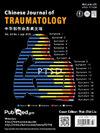Sparing piriformis and internus repairing externus vs. other conventional approaches for hip hemiarthroplasty: A report of early outcomes from a single UK trauma unit
IF 1.9
4区 医学
Q2 ORTHOPEDICS
引用次数: 0
Abstract
Purpose
Over 30,000 hip hemiarthroplasties for neck of femur fractures are performed annually in the United Kingdom (UK). The national recommendation is via the lateral approach, to reduce the risk of dislocation, with the potential expense of reduced function and mobility post-operatively. Muscle-sparing approaches, such as SPAIRE (sparing piriformis and internus repairing externus), have been invented to address the issue of dislocation.
Methods
We performed a retrospective data collection at a single center with a high annual volume of hip hemiarthroplasties over 12 months. All patients who had hip hemiarthroplasty as their primary treatment were included. Patients who passed away and were non-ambulant before their surgery were excluded from the study. Our primary outcome was the dislocation rate and secondary outcomes were the time to mobilization after surgery and the duration of surgery. Statistical analysis was performed using XLSTAT software.
Results
We identified 194 cases, and these were divided into 3 groups based on the surgical approach: SPAIRE (n = 43), lateral (n = 97), and posterior (n = 54). Groups had similar demographics and a minimum 3-month follow-up after surgery. There were no dislocations in the SPAIRE group, whereas the dislocation rate for the other 2 groups was 2.5% in the lateral and 9.1% in the posterior groups at 6 months post-surgery. There was an earlier return to mobility in the SPAIRE (1.4 day) compared to the 2 other groups ( 2 days and 2.6 days). Average surgical times were very similar among all 3 groups (74 min vs. 79 min vs. 71 min).
Conclusion
The SPAIRE approach seems to be safe and provides a low risk of dislocation and good post-operative function for patients undergoing hip hemiarthroplasties.
髋关节半关节置换术中疏通腓肠肌和内侧肌修复外侧肌与其他传统方法的对比:英国一家创伤科室的早期成果报告
目的:在英国,每年有超过30,000例股骨颈骨折的髋关节半置换手术。国家推荐采用外侧入路,以减少脱位的风险,同时降低术后功能和活动能力的潜在费用。肌肉保留入路,如SPAIRE(保留梨状肌和内肌修复外肌),已被发明用于解决脱位问题。方法:我们在一个单一的中心进行回顾性数据收集,在过去的12个月中,每年髋关节半置换术的量很大。所有以髋关节置换术为主要治疗方法的患者均被纳入研究。手术前去世且不能走动的患者被排除在研究之外。我们的主要结果是脱位率,次要结果是手术后活动时间和手术持续时间。采用XLSTAT软件进行统计分析。结果194例患者,根据手术入路分为3组:SPAIRE (n = 43)、侧路(n = 97)和后路(n = 54)。各组的人口统计数据相似,术后随访至少3个月。术后6个月,SPAIRE组无脱位,其余2组外侧脱位率为2.5%,后侧脱位率为9.1%。与其他两组(2天和2.6天)相比,SPAIRE组恢复活动能力的时间更早(1.4天)。三组患者的平均手术时间非常相似(74分钟、79分钟、71分钟)。结论SPAIRE入路安全,脱位风险低,术后功能良好。
本文章由计算机程序翻译,如有差异,请以英文原文为准。
求助全文
约1分钟内获得全文
求助全文
来源期刊

Chinese Journal of Traumatology
ORTHOPEDICS-
CiteScore
3.80
自引率
4.80%
发文量
1707
审稿时长
28 weeks
期刊介绍:
Chinese Journal of Traumatology (CJT, ISSN 1008-1275) was launched in 1998 and is a peer-reviewed English journal authorized by Chinese Association of Trauma, Chinese Medical Association. It is multidisciplinary and designed to provide the most current and relevant information for both the clinical and basic research in the field of traumatic medicine. CJT primarily publishes expert forums, original papers, case reports and so on. Topics cover trauma system and management, surgical procedures, acute care, rehabilitation, post-traumatic complications, translational medicine, traffic medicine and other related areas. The journal especially emphasizes clinical application, technique, surgical video, guideline, recommendations for more effective surgical approaches.
 求助内容:
求助内容: 应助结果提醒方式:
应助结果提醒方式:


